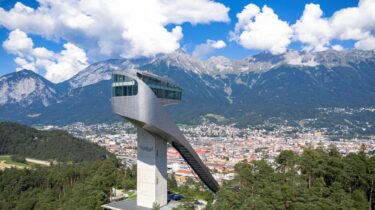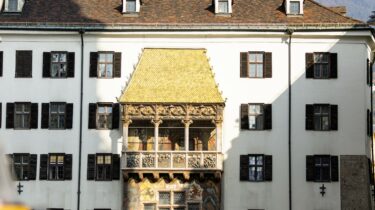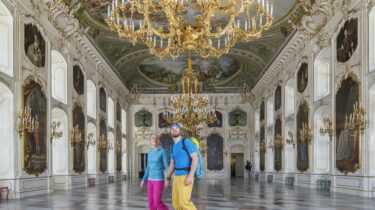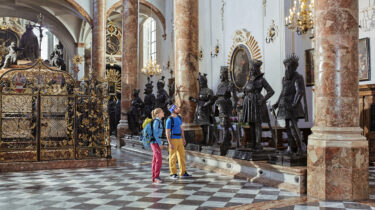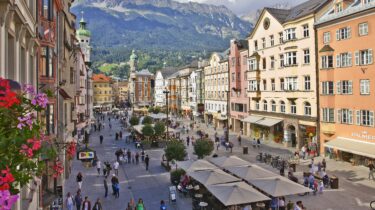The best by far: the “walks to explore” reveal Innsbruck in all its variety
Last updated on 25.04.2022
Setting out on unknown paths and discovering new perspectives in Innsbruck is so easy on the “Walks to explore”. These seven themed trails invite visitors to get to know the city and its impressive alpine-urban variety on individual tours. What about discovering Innsbruck’s imperial heritage? Meet Maximilian, Sisi and others – all on the Habsburg Walk.
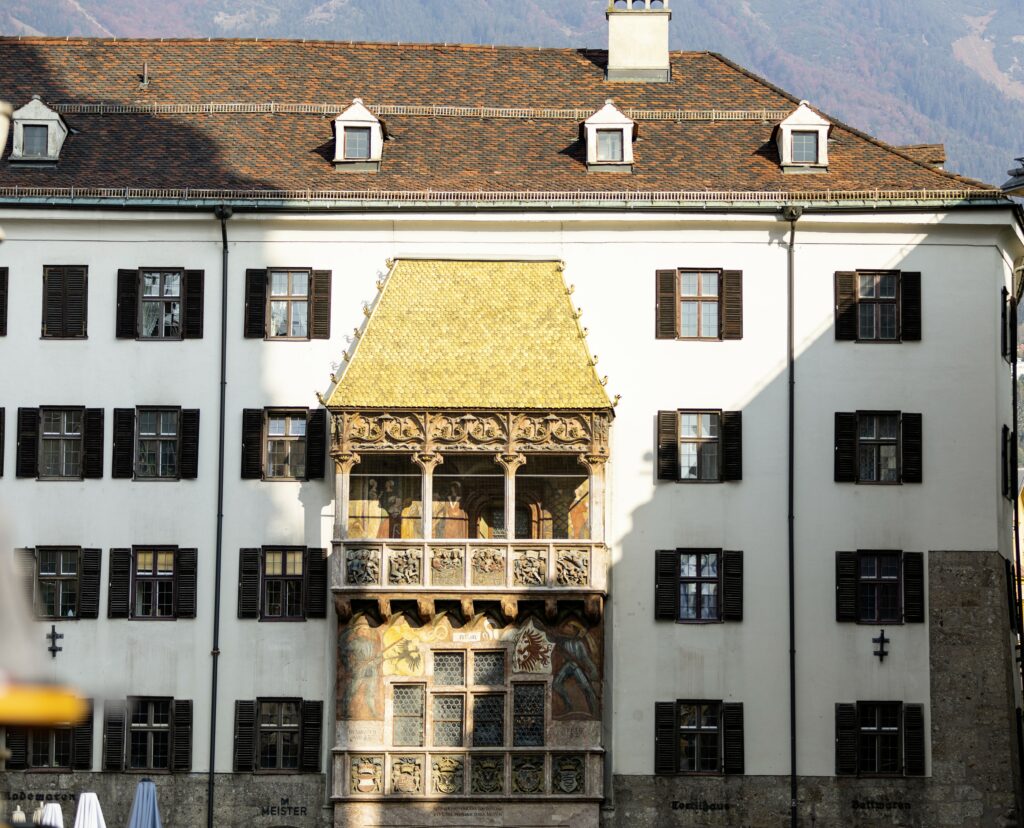
Setting out on new paths is easy in Innsbruck: the “Walks to explore”, seven themed city walks, lead through and across the city, away from the crowds and into a world of adventure. Discover the city’s impressive variety for yourself: there are sights both well-known and hidden, corners both familiar and secret, between the Bergisel Ski Jump and the Sill Gorge, in the historic district of Anpruggen, or in the cool, modern, youthful areas. And the Habsburg Walk will give you a sense of historic grandeur: a special walk that takes in the most significant locations in Innsbruck with links to its imperial past.
This walk can be explored individually, but also with the welcome accompaniment of the Innsbruck Card. Valid for 24, 48 or 72 hours, the card includes one-time admission to all museums and attractions along the Habsburg Walk as well as to other holiday highlights, for example the Swarovski Crystal Worlds in Wattens or a ride on the Nordkettenbahnen funicular and cable cars: public transport in the city is also included. For all information see www.innsbruck.info/innsbruckcard. So let’s go!
To begin with: 2,657 gleaming tiles
Almost everyone who has heard the name of Innsbruck will at once think of the Golden Roof. The people of Innsbruck owe “their” Golden Roof to none other than the famous Emperor Maximilian I: this influential Habsburg monarch had the impressive oriel with its roof of gilded copper tiles added to the residence of the Tyrolean sovereigns, thus creating what is probably the most famous landmark of the Tyrolean capital. If you look closely, you can also recognise the Emperor in the reliefs on the oriel: he is depicted together with his two wives as well as with his chancellor, court jester and some Moorish dancers.
A grave marker without a grave
Emperor Maximilian I built another monument to himself in the form of a monumental tomb in the Court Church, the next stop on the cultural walk after the Golden Roof and the Cathedral of St. James. But he is not buried there: he was in fact laid to rest in Wiener Neustadt. Around the tomb are 28 impressive bronze statues. These “Schwarzen Mander [Black Men]”, as the larger-than-life figures are popularly called, represent family members, ancestors and heroes. But there are not only men: eight women also appear among them. The detailed reliefs on the walls of the tomb, made of the finest white marble and depicting scenes from the life of Maximilian I, definitely merit a closer look.
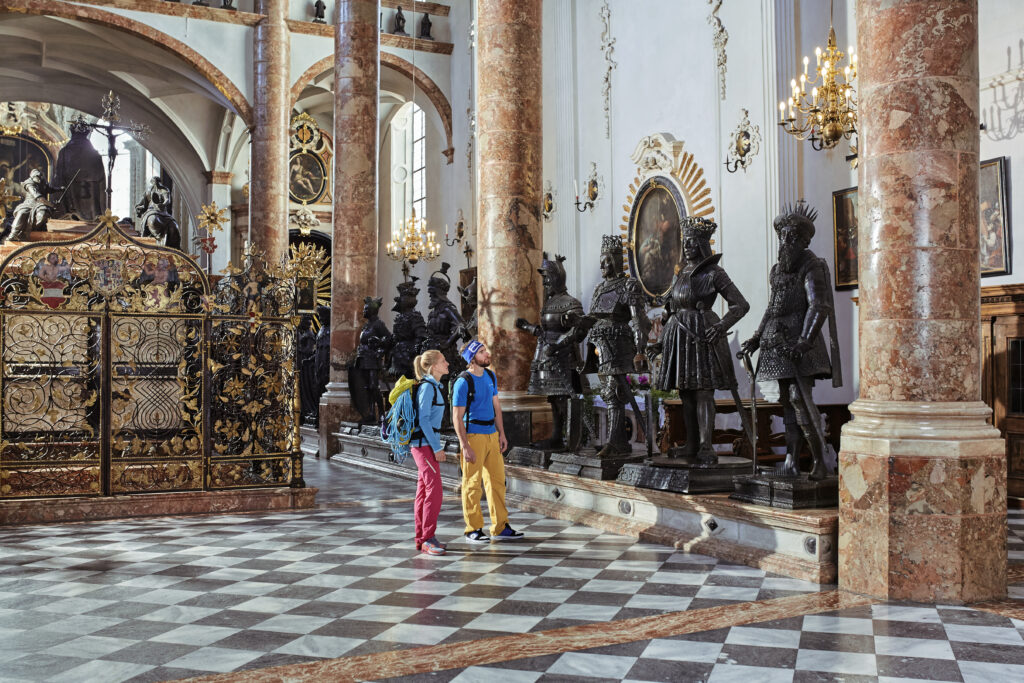
Three Habsburgs and the Imperial Palace
To learn more about the lives of the notable Habsburgs, make a detour to the Hofburg, the Imperial Palace. This impressive building on Innsbruck’s Rennweg owes its appearance to none other than the Empress Maria Theresa. This Habsburg ruler initiated the 18th-century reconstruction of the late-medieval former castle. The palace contains the Imperial Apartments, which were furnished for another Habsburg – the Empress Elisabeth, better known as “Sisi”. The permanent exhibition about Maximilian I is also well worth a visit: using the latest multimedia technology, it not only focuses on the Emperor’s personality, his wives, court life and the influences that shaped his life, but also depicts the European and global aspects.
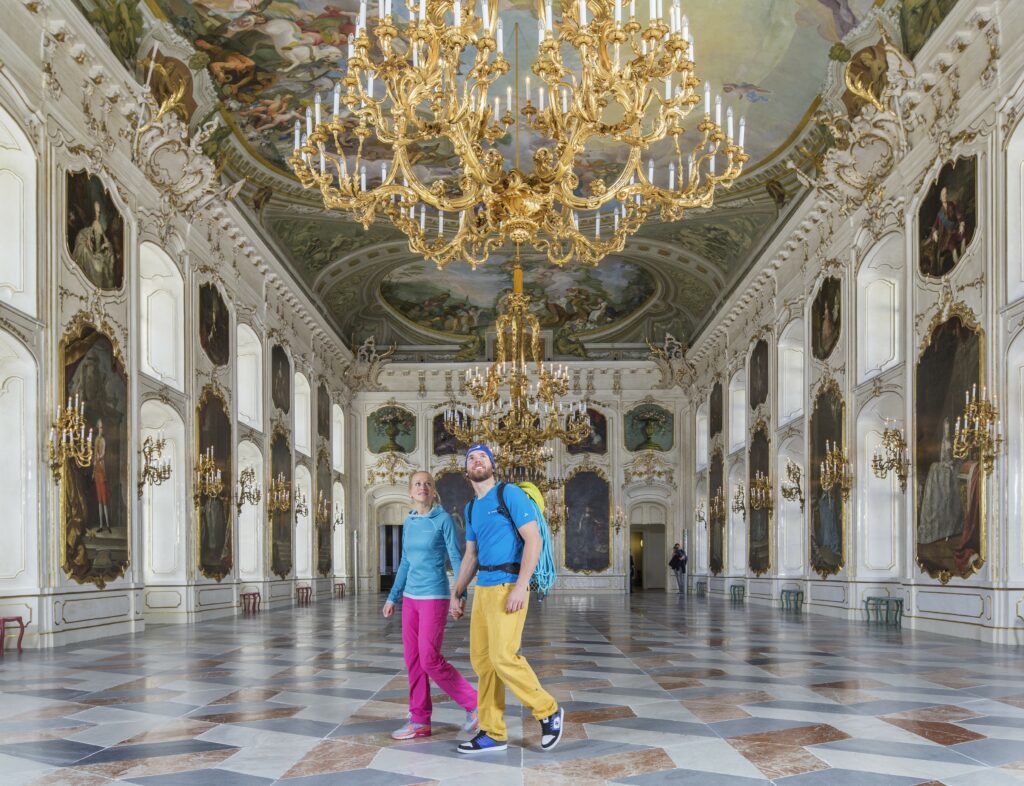
Through the Triumphal Arch to the Grand Boulevard
Continuing along the suggested route, you pass the Jesuit Church and Rudolf’s Fountain to reach the next important testimony to the Habsburgs in Innsbruck: the Triumphal Arch. It was built on the occasion of the wedding of Maria Theresa’s second son, the Archduke Leopold, to Princess Maria Luisa of Spain. The celebrations were unfortunately overshadowed by the unexpected death of young Leopold’s father, Francis Stephan of Lorraine, shortly after the wedding. The mourning on the occasion of his death was incorporated into the arch’s design: the landmark thus shows both the joyful and sad sides of life.
The Triumphal Arch is also the gateway to Innsbruck’s almost 500-metre main avenue, the Maria-Theresien-Strasse, which leads back into the old town at the other end and offers a view of the Golden Roof. Both its historic house façades and urban shopping opportunities make the street a favourite spot for numerous locals and visitors alike. The best way to round off this imperial stroll is to take in one of the welcoming garden cafés, with views of the Golden Roof and the imposing Nordkette rising skywards beyond.
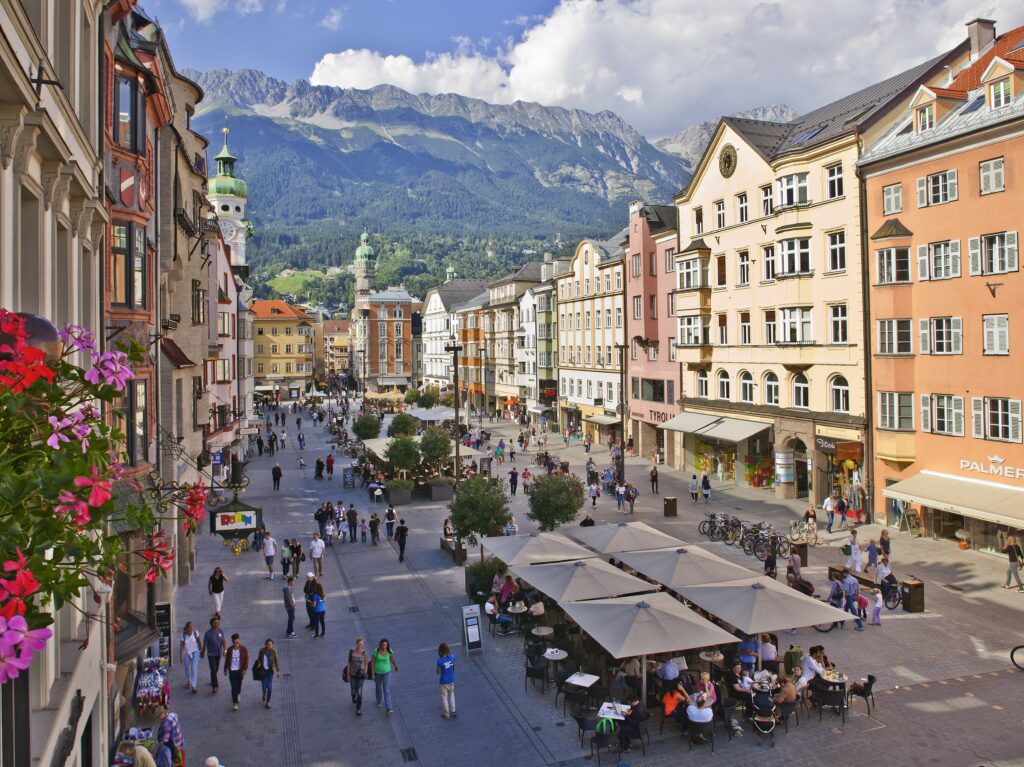
Seven ways to explore the city: the “Walks to explore”
It is not only Innsbruck’s imperial heritage that offers new perspectives: with a total of seven “Walks to explore”, the city offers visitors the freedom to follow individual tours of discovery according to mood and interest. The “Walks to explore” brochure – available from Innsbruck Information on the Burggraben or online, combined with the Innsbruck App – will mean you are fully equipped for Innsbruck tours of all kinds.
- Walk 1: alpine-urban perspectives: city and mountain in one tour
- Walk 2: huge tower, deep ravines: from Ski Jump and the Sill Gorge
- Walk 3: modern life and quiet reflection: the seven Christmas markets in Innsbruck
- Walk 4: Maximilian, Sisi & Co.: in the footsteps of the Habsburgs
- Walk 5: young Innsbruck: on your bike and explore skating rink, climbing paradise and bathing lake
- Walk 6: explore modern Innsbruck: world class architecture fused with Tyrolean artistry
- Walk 7: authentic Innsbruck: escape the old town bustle, linger in the quiet historic surroundings
For all information see www.innsbruck.info/walks.
Explore even further: the Welcome Card unlimited
For all those who would like to explore yet more, Innsbruck also makes the ideal starting point for excursions to other attractions in the surrounding area. The “Welcome Card unlimited” features seven top Tyrolean highlights at an unbeatable price, including the Stubai Glacier, the Swarovski Crystal Worlds and the 007 Adventure World in Sölden. For all information see www.innsbruck.info/welcome.
About Innsbruck Tourismus
Innsbruck Tourismus is the official destination management organisation for the Innsbruck region, encompassing the capital of Tyrol and over 40 localities in the surrounding area, from the Inntal valley to the Mieming Plateau via Kühtai and as far as the Sellraintal valley. With almost 3.5 million overnight stays (as of 2019), the Innsbruck region is one of Austria’s largest tourism institutions – a unique symbiosis of pulsating urban space and fascinating Alpine world. The vibrant city atmosphere and sightseeing highlights are just a stone’s throw from your next biking or hiking tour, your next ski adventure or winter walk. The Welcome Card, free for visitors, is the key to the region’s boundless opportunities: public transport, usable at no cost, means that the area’s numerous highlights can be enjoyed both sustainably and comfortably. Visitor enjoyment is the focus of the thoughts and actions of each of the organisation’s 90 or so staff: they pass on their passion and enthusiasm for this alpine-urban space to guests, ensuring unforgettable holiday experiences for all in harmony with both people and nature. With a total of twelve tourist information offices, Innsbruck Tourismus can stay close to visitors, be right in the action and keep a finger on the pulse of events – a true hub for the authentic stories and personal impressions of local characters that can be found on the popular blog and social media channels at #myinnsbruck.
Further links
Blog: www.innsbruck.info/blog
Facebook: www.facebook.com/Innsbruck
Instagram: www.instagram.com/innsbrucktourism
Twitter: twitter.com/InnsbruckTVB
YouTube: https://www.youtube.com/user/InnsbruckTVB
Pinterest: www.pinterest.at/innsbrucktvb/_created

